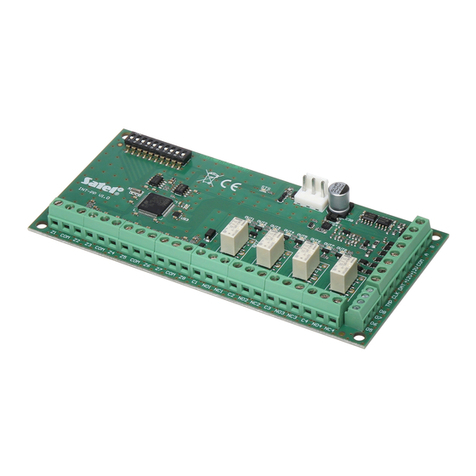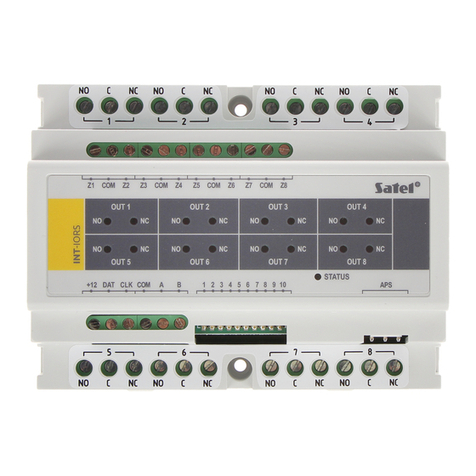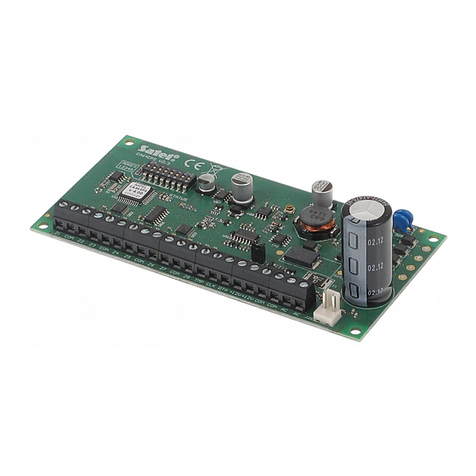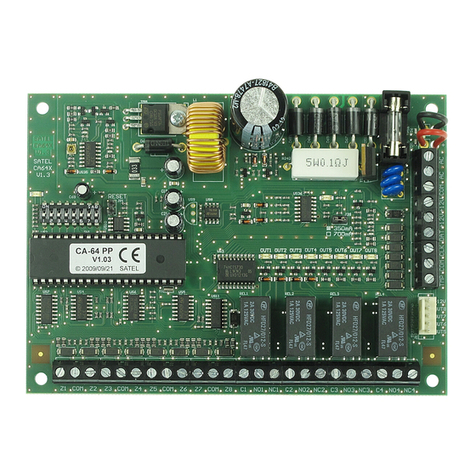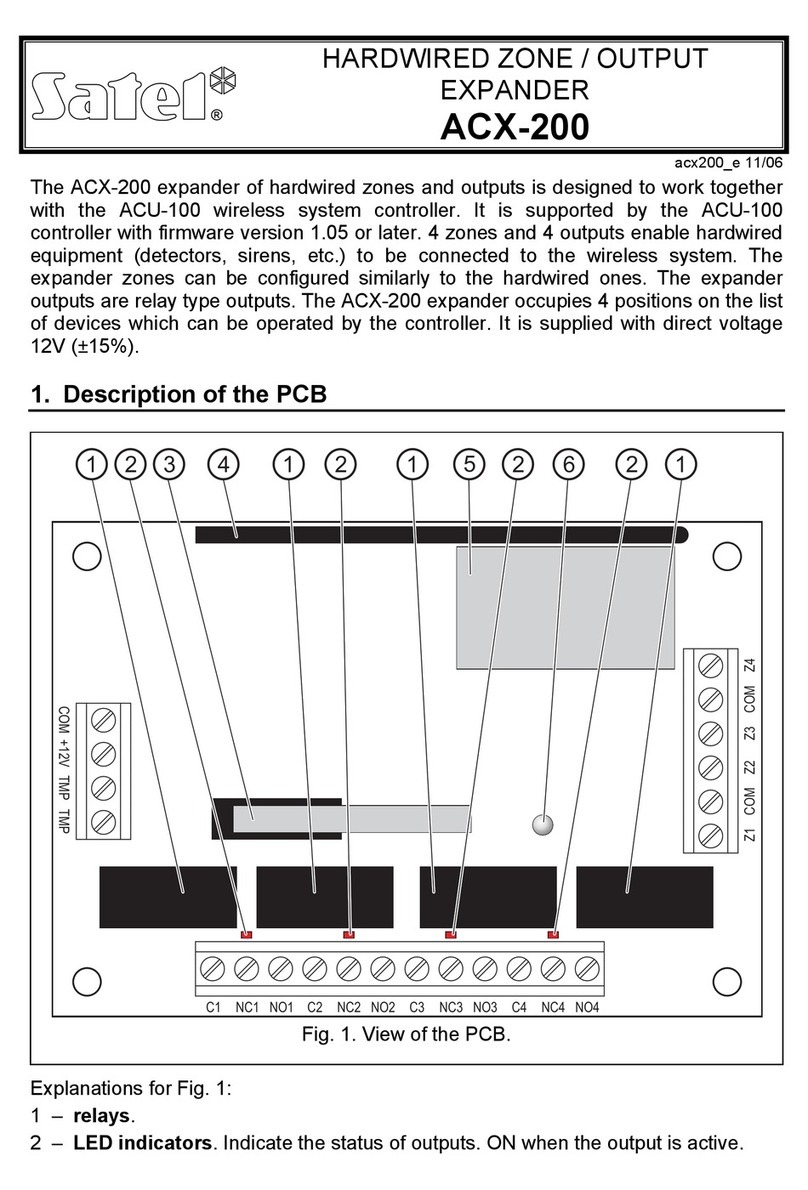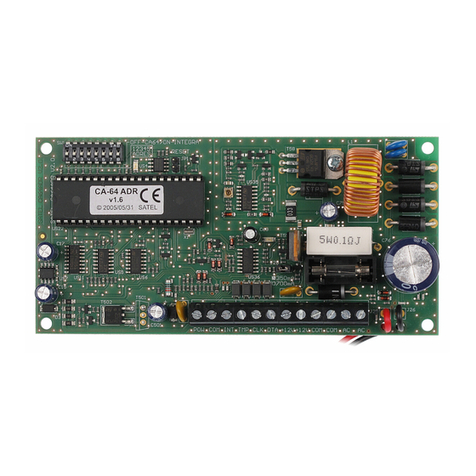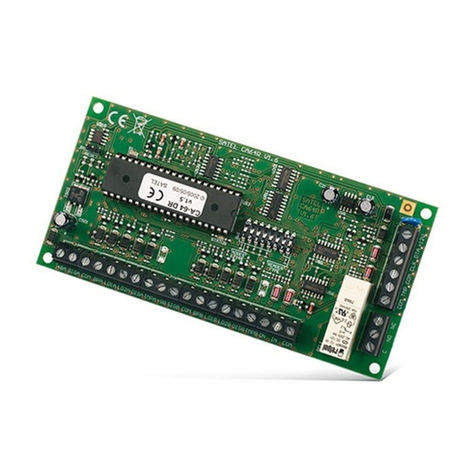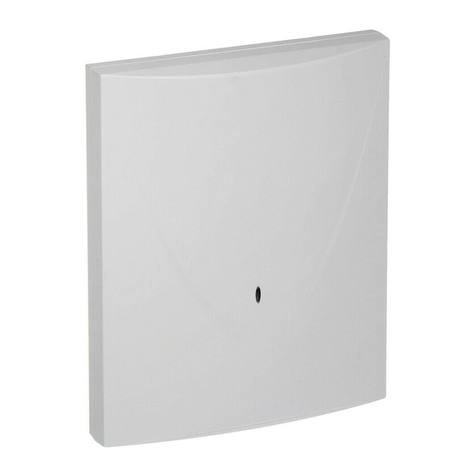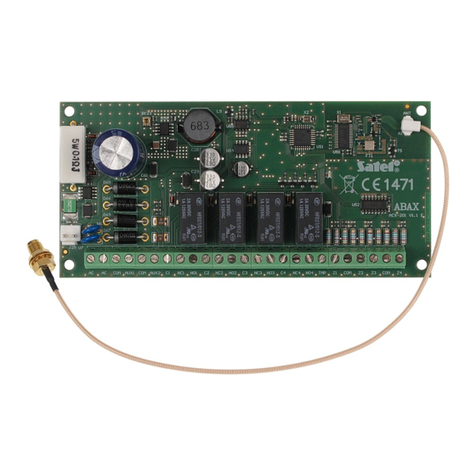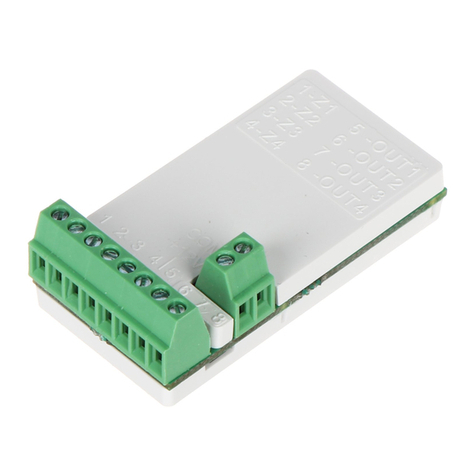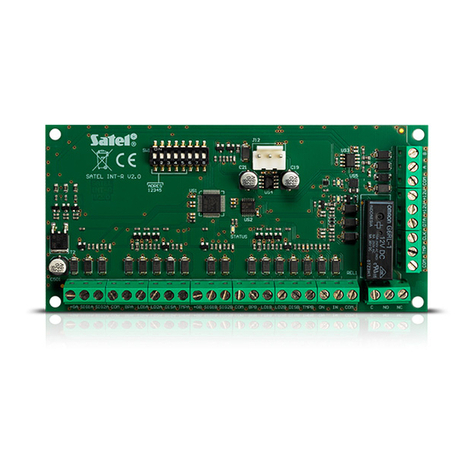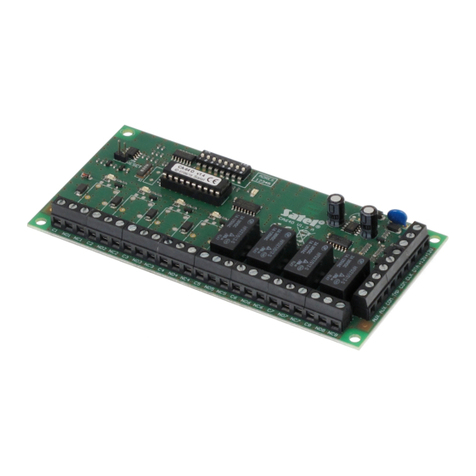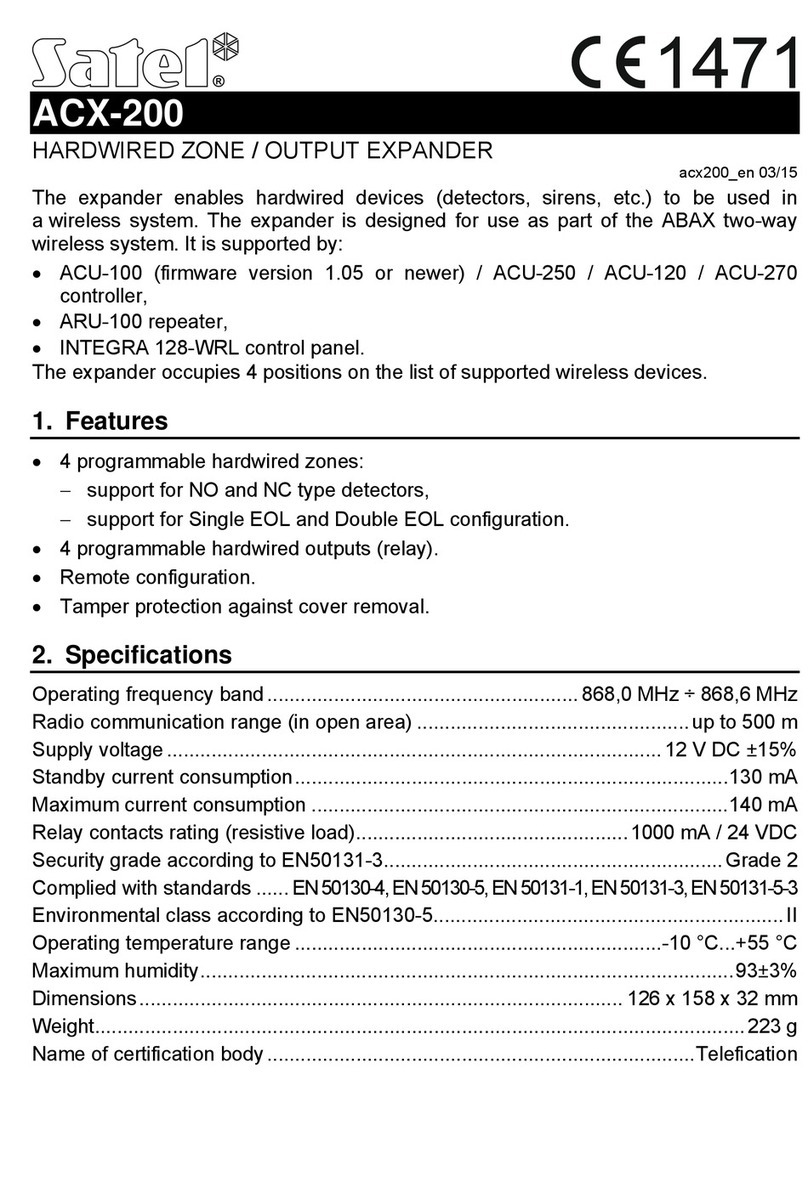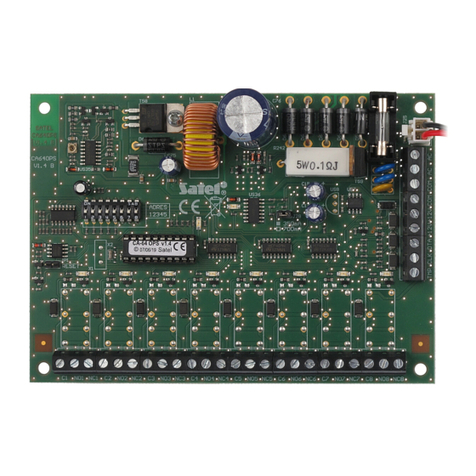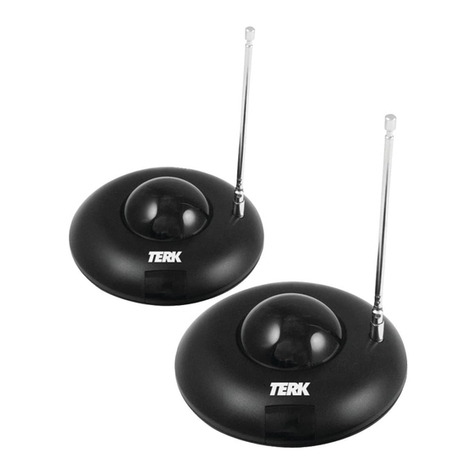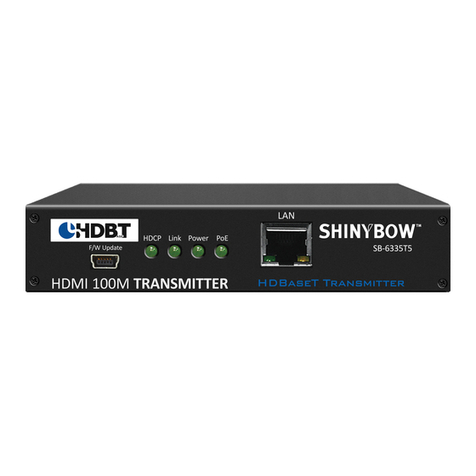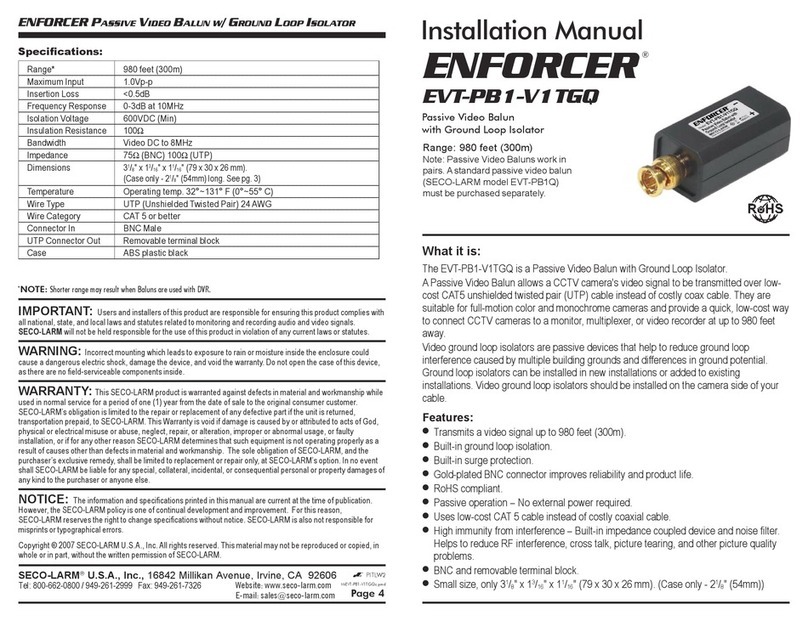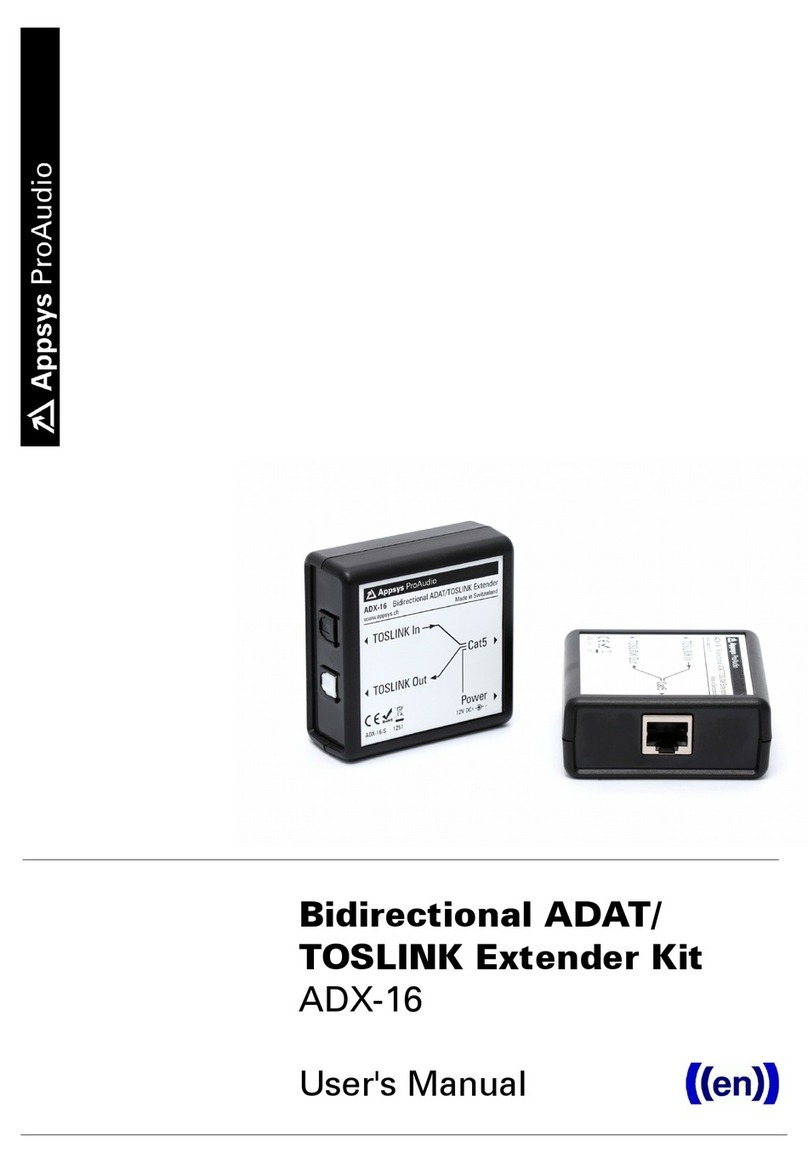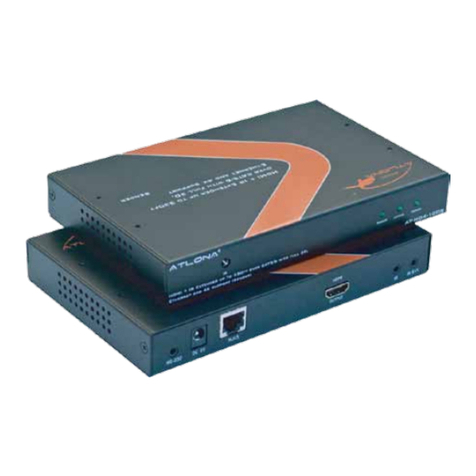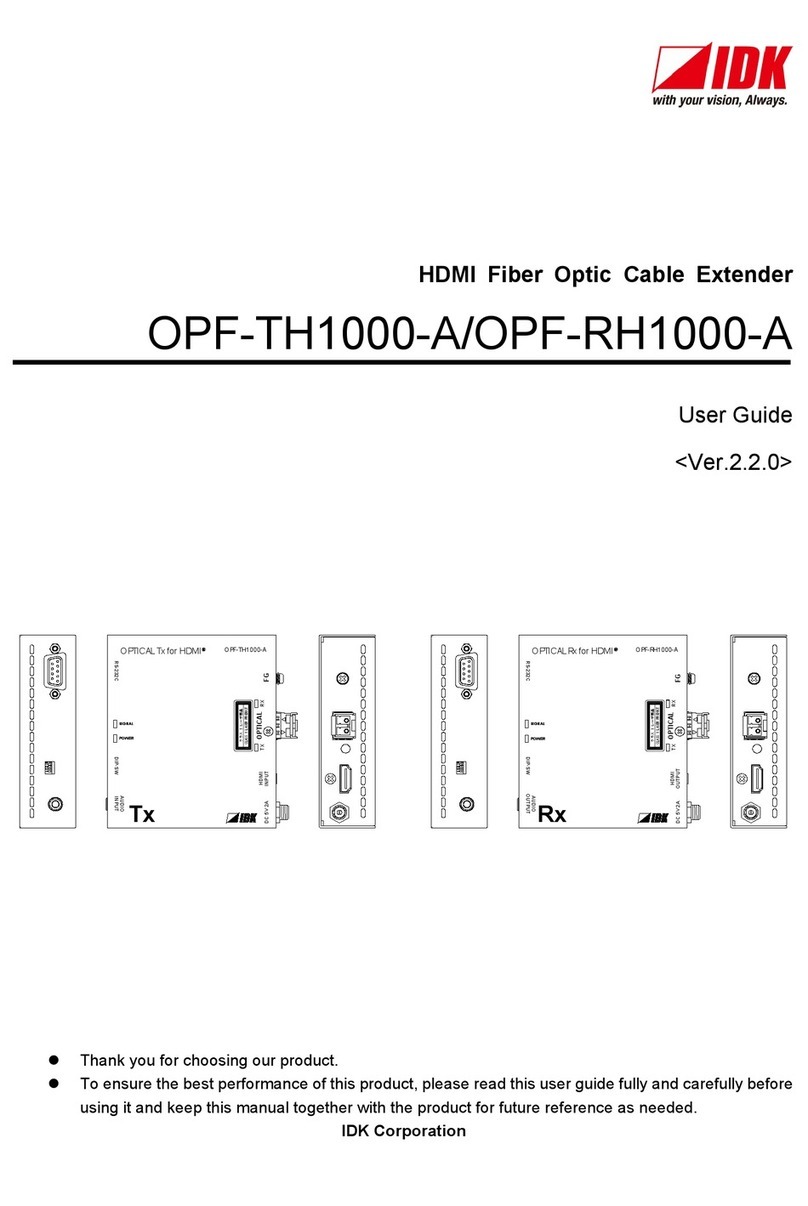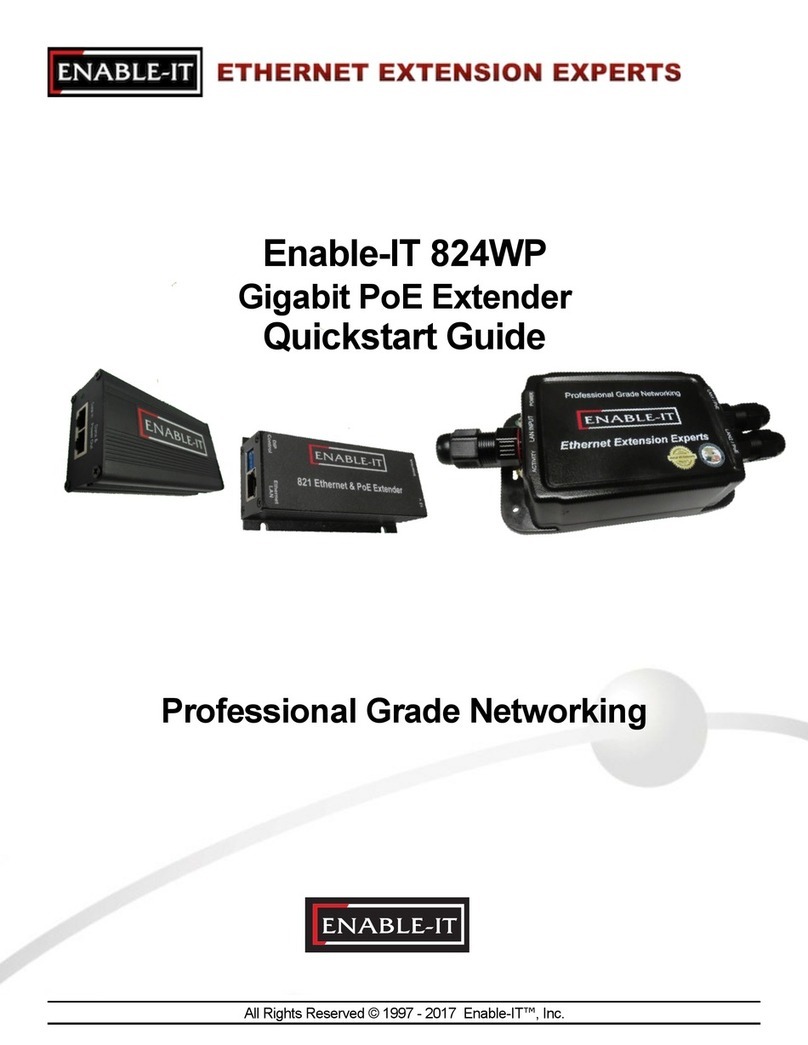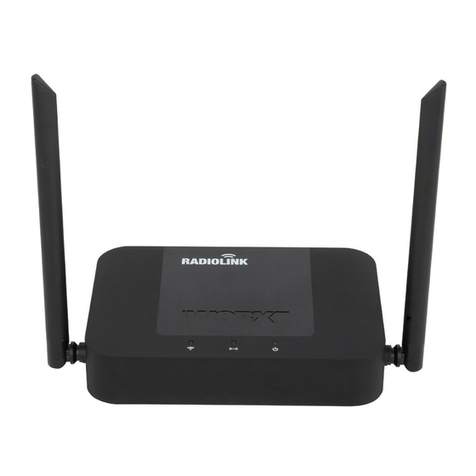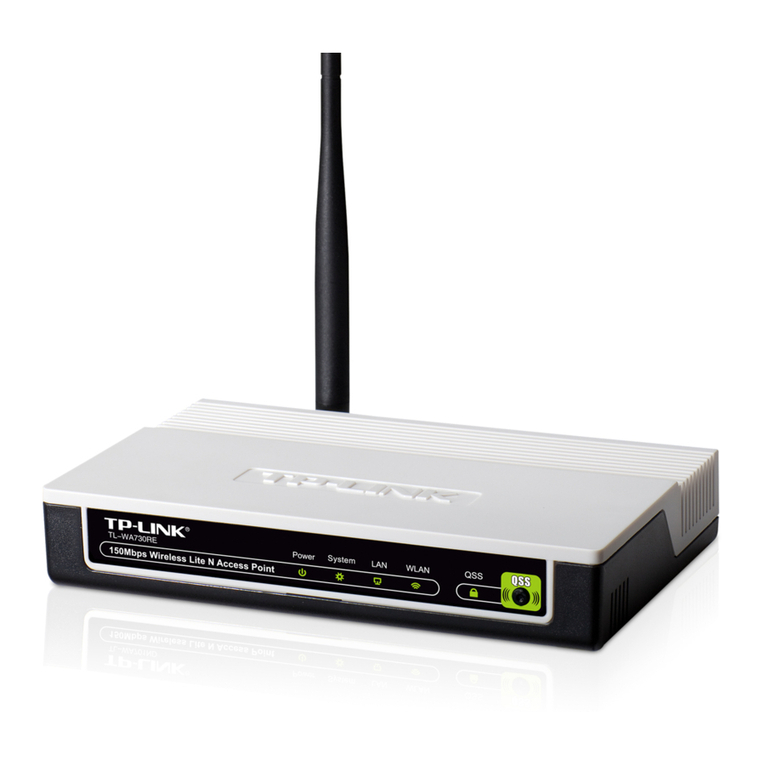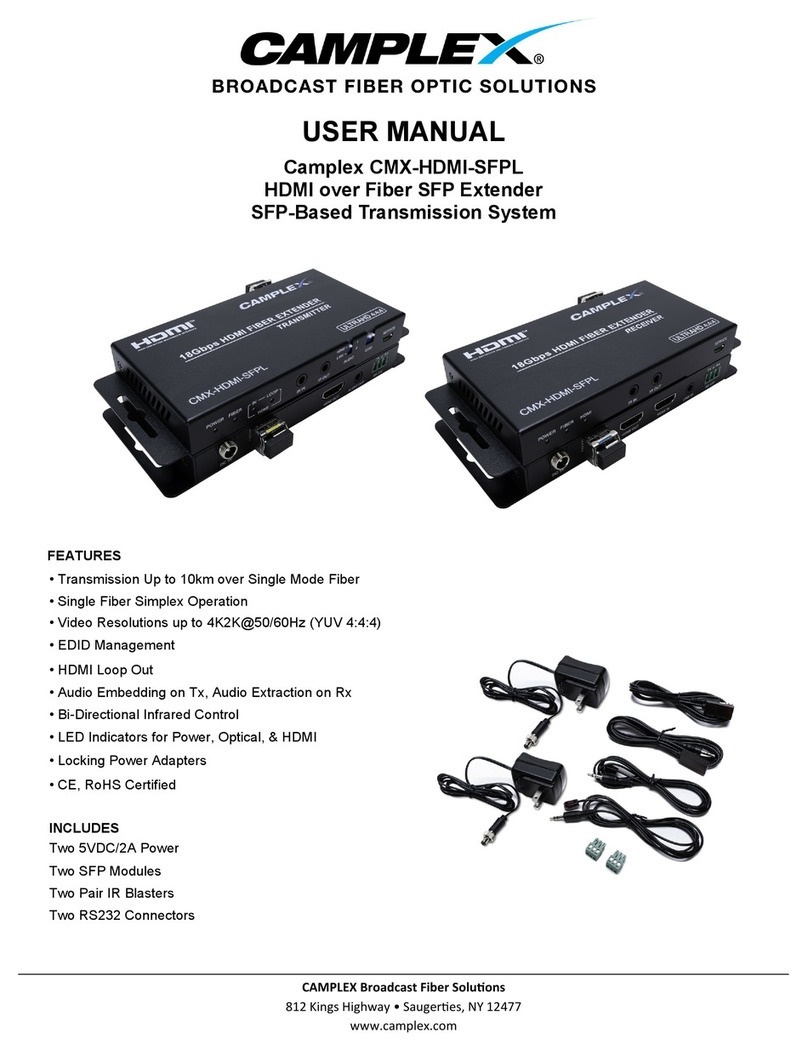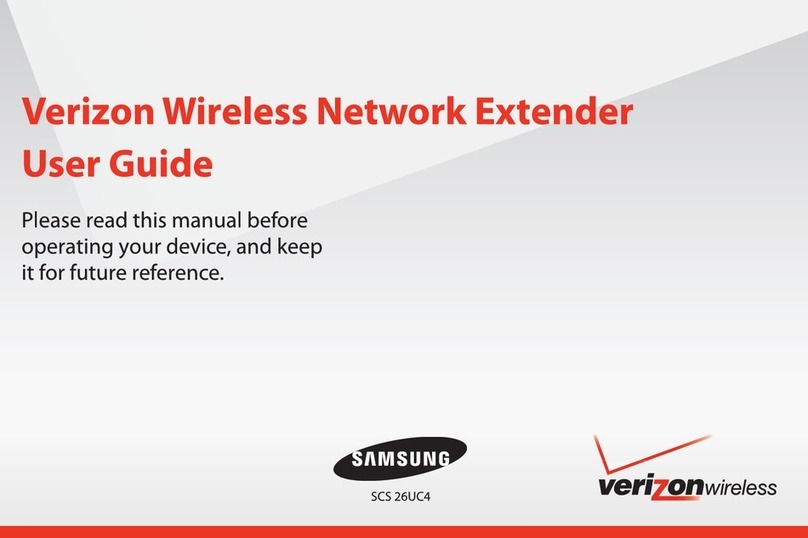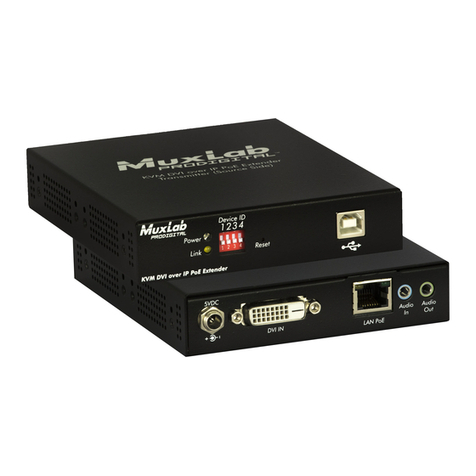
4 INT-ADR SATEL
The expander is designed for indoor installation.
1. Fasten the expander electronics board in the enclosure.
2. Using the DIP-switches, set the suitable expander address and define how it is to be
identified.
3. Connect the CLK, DAT and COM terminals to the corresponding terminals of the control
panel communication bus (see: installer manual for alarm control panel). It is
recommended that an unshielded non-twisted cable be used to make the connection. If
you use the twisted-pair type of cable, remember that CLK (clock) and DAT (data) signals
must not be sent through one pair of twisted conductors. The conductors must be run in
one cable.
4. If the expander is to supervise the enclosure tamper contact, connect the wires of tamper
contact to the TMP and COM terminals. If the expander is not to supervise the enclosure
tamper contact, connect the TMP terminal to the expander COM terminal.
5. Connect the addressable detectors to the expander (see: C
ONNECTING ADDRESSABLE
DETECTORS
).
6. Depending on the selected method of expander powering, connect the dedicated power
supply unit to the connector on expander electronics board or connect the power leads to
the +12V and COM terminals (the expander may be powered directly from the control
panel, from an expander with power supply or from a power supply unit).
The expander must not be powered from both sources at the same time.
7. Power on the alarm system.
8. Start the identification function in the control panel. After the expander is identified, the
addressable zones will be given corresponding numbers in the alarm system (see:
N
UMBERING ADDRESSABLE ZONES
). The control panel monitors presence of the identified
modules. If the module is disconnected from communication bus, position of DIP-switches
is changed, or the device is replaced with another one with DIP-switches set in the same
way, a tamper alarm will be triggered.
Note: The status of addressable zones is read out by the expander every 200 ms. When
programming the zone sensitivity, do not enter any values lower than 200 ms.
5. Connecting addressable detectors
Addressable detector is a detector with the CA-64 ADR-MOD module installed. Dimensions
of the module enable it to be mounted inside the detector enclosure.
The maximum distance between the addressable detector and the expander may be up to
1000 m. Table 4 shows requirements for the common ground wires if 0.5 mm dia. conductors
are used.
Distance to expander Number of conductors connected in parallel
up to 200 m 1
200-400 m 2
400-600 m 3
600-1000 m 4
Table 4.
The addressable modules and detectors should be powered from the POW output of the
expander. Where the sum of currents drawn by the addressable modules and detectors
exceeds the output current of power supply unit connected to the expander, the detectors
may be powered from another source (but not the addressable modules).
